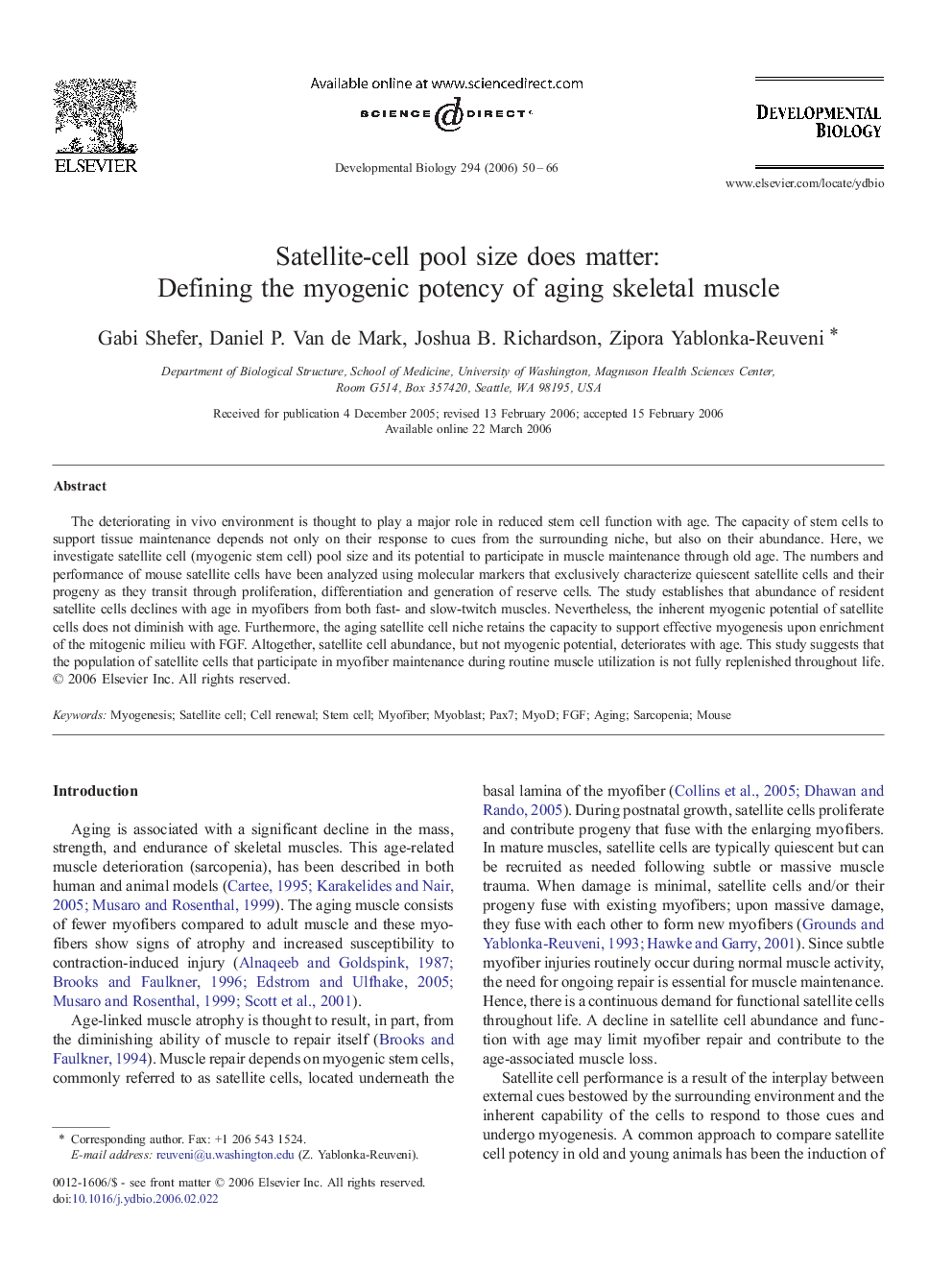| Article ID | Journal | Published Year | Pages | File Type |
|---|---|---|---|---|
| 2176113 | Developmental Biology | 2006 | 17 Pages |
The deteriorating in vivo environment is thought to play a major role in reduced stem cell function with age. The capacity of stem cells to support tissue maintenance depends not only on their response to cues from the surrounding niche, but also on their abundance. Here, we investigate satellite cell (myogenic stem cell) pool size and its potential to participate in muscle maintenance through old age. The numbers and performance of mouse satellite cells have been analyzed using molecular markers that exclusively characterize quiescent satellite cells and their progeny as they transit through proliferation, differentiation and generation of reserve cells. The study establishes that abundance of resident satellite cells declines with age in myofibers from both fast- and slow-twitch muscles. Nevertheless, the inherent myogenic potential of satellite cells does not diminish with age. Furthermore, the aging satellite cell niche retains the capacity to support effective myogenesis upon enrichment of the mitogenic milieu with FGF. Altogether, satellite cell abundance, but not myogenic potential, deteriorates with age. This study suggests that the population of satellite cells that participate in myofiber maintenance during routine muscle utilization is not fully replenished throughout life.
